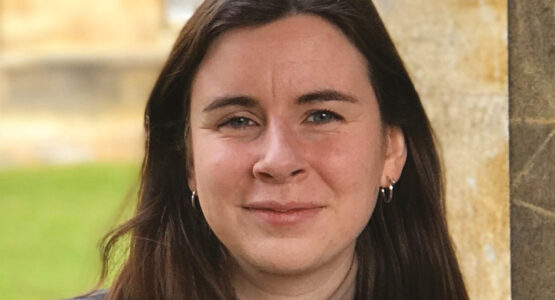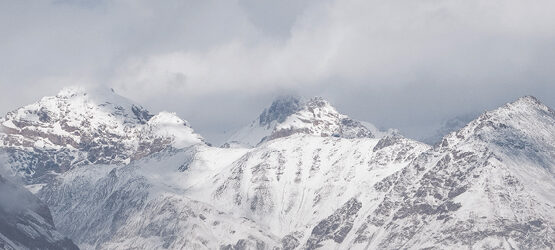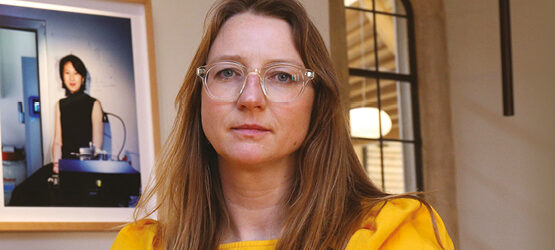There are not many champagne historians around, but for Graham Harding (1968) it has been a fulfilling third career post-retirement. Graham studied History at St John’s as an undergraduate and returned to pursue a Master’s degree on the history of wine nearly five decades later. Graham now has a DPhil from Oxford and has written, edited and contributed to a number of books on the subject. In this article he tells us more about his research into one of the world’s most famous drinks.
Tell us a bit about your academic background and career history.
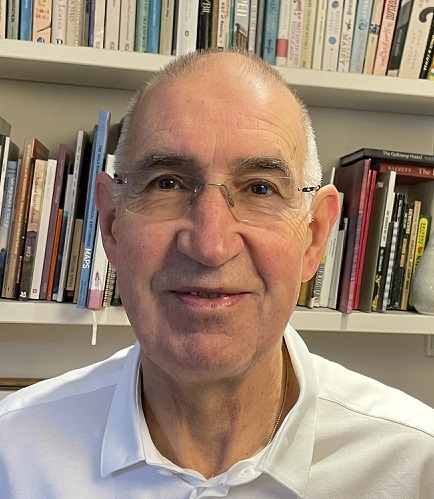
Having read History at St John’s in the late 1960s, I started a doctorate but never completed it – it was a case of wrong subject, wrong supervisor and my entirely inadequate command of medieval Latin. So I became an educational publisher. Along the way I worked on reading schemes for primary age children, produced a computer game for children called ‘Hot Dot Spotter’ that became the first educational title to make the National Top Ten charts, and nearly became a dictionary publisher. But after 10 years the ‘New Media’ division I worked in was closed and I was redundant.
That was the best career move ever for me. I found myself a job in an advertising agency, discovered that publishing had taught me a lot about marketing and, with a partner, founded what became Britain’s largest independent marketing and branding consultancy –
The Value Engineers (still going strong after nearly 40 years). During this period I became fascinated by successful brands and how they were made and managed.
But, after 25 years my business partner and I sold the company and I started thinking, ‘now what?’
So what made you get back into academia?

As it happened, I’d also found time while working to research and write a book on wine, which I’d started taking seriously after doing a series of wine-tasting courses and becoming a non-exec director of a wine importing business.
The book involved a lot of (fairly entertaining) internet research which demanded serious tasks such as putting ‘wine and sex’ into the nascent internet and turning some of the hundreds of thousands of hits into publishable stories. It’s an indication of progress of a sortt hat the hits for the same search term are now in the tens of millions…
Nonetheless, doing The Wine Miscellany re-awoke my interest in history in general and wine history in particular. I had the sense that my uncompleted doctorate was just that – unfinished business. So I persuaded the History Faculty to let me do a Master’s as a mature student. St John’s welcomed me back and I spent a year commuting from home in Oxford to Cambridge and to the Champagne region. I followed it up with an Oxford doctorate which was published by Bloomsbury as Champagne in Britain, 1800-1914: How the British Transformed a French Luxury, and went on to win the Organisation Internationale du Vin’s 2022 prize as the best wine history book of the year.
And why champagne?
My first thought for a dissertation subject had been the branding of wine in general in the nineteenth century. Working for so long in marketing had given me a fascination with brands and branding. How did wine brands work? When and why did the names of the major houses get to be so important and powerful? And why the nineteenth century?
It was the era of the first globalisation of wine, when Britain had probably a wider choice of wine than any other country. London then was rather akin to Silicon Valley today: a great deal of money and power and a determination to have the best of everything. For a researcher there were also the added benefits of easier languages, more data and more legible handwriting than medieval archives.
What I rapidly realised from my first weeks of reading was that if I was looking for brands in the British wine market then champagne was the drink to choose and Champagne the place to go. I went to Reims and Epernay where slightly bemused owners and archivists welcomed me and showed me where their ‘archives’ were. In some cases these were neatly filed and ordered; in others it was a case of digging into boxes of old ledgers in draughty attics with snow drifting through the cracks in the tiles.
What were your research questions and findings?
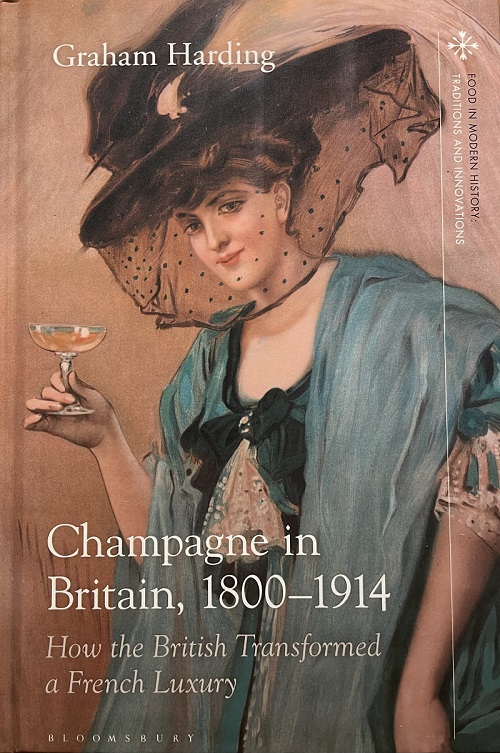
My fundamental research question was: how was champagne marketed in the nineteenth century and what links the wine of today with that of 150 years ago?
I was lucky. In one the most prestigious of maisons I came across the letterbooks of a man called Adolphe Hubinet, the London agent for Pommery champagne between 1860 and the mid-1890s. It was clear from his letters that here was a man who had an instinctive grasp of marketing. He lacked the jargon of today’s marketers, but he was asking the same questions and solving – brilliantly solving – the same problems. Under his tenure, Pommery became the highest-priced and most talked-about champagne in the British market. It was he who persuaded his French principals to create a distinctive ‘house style’ that could be maintained from year to year; it was he who launched and successfully marketed the first vintage-dated champagne of modern times.
As a nation we still consume a great deal of champagne – though prosecco is now making big inroads into France’s share of the sparkling wine market – but in the Victorian period the British were Champagne’s top customers. All the great champagne names we know today flooded into the British market and brought their advertising weight and marketing innovation to bear. The result was the world’s first set of luxury brands, conceived and managed as such.
But what I also discovered was how remarkably powerful champagne was as a ‘lens’ on British society in the Victorian period. This was a highly mobile, often insecure society. Newly prosperous middle-class professionals (lawyers, accountants, civil servants) wanted to show the world that they had made it. And champagne on their dinner table was a great way to do so. But that meant a champagne that could be drunk with roast meats and savoury dishes (to the reported horror of the French). So the sweet champagne drunk on the European mainland became steadily drier for the British market. Far drier than most of us drink it today.
Where else has your research taken you?
Apart from visiting other nice places in France – the Loire, Burgundy, Bordeaux – one of
the greatest finds was the Diageo Archive in Scotland. There you can find the extensive records of the firm of W. & A. Gilbey, who dominated the British retail wine market for well over 70 years from the late 1850s, to the extent that in nearly every settlement with over 1,000 inhabitants they had an outlet, usually the local grocer’s store. They made wine accessible to almost all – and in doing so they created the world’s first real ‘range brand’ antedating ‘Heinz 57’ by nearly 40 years.
Now I get the opportunity to do champagne tastings for universities, colleges, London clubs and local French societies, telling the history of champagne in eight bottles!
I bet people want to ask you a lot of questions!
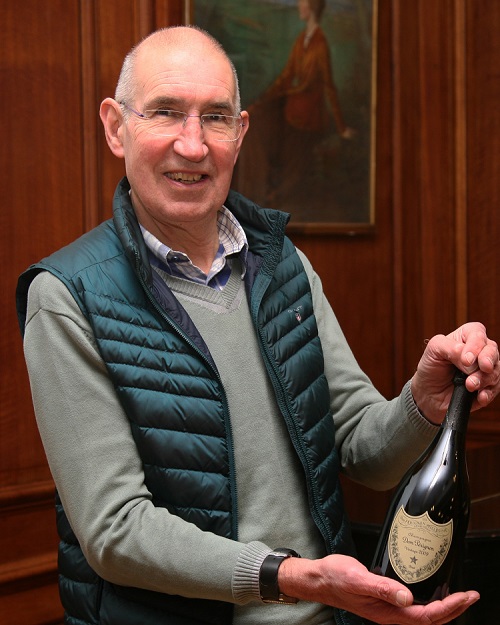
There are two questions I’m often asked. What is your favourite champagne? What do you think of English fizz?
Well if money were no object, then I’d pick Dom Pérignon. Wonderful wine, fascinating brand story but far, far too expensive for anything other than very special occasions. So I usually turn to Pommery or Pol Roger because the taste (and the sight of the bottle) brings back wonderful memories of working in their archives.
By the way, Dom Pérignon (the monk) spent his life trying to eradicate the bubbles – but it won’t stop me enjoying his eponymous champagne whenever I get the chance.
As to English fizz? There is brilliant English wine. It’s the same geology as the Champagne region and climate change is (on balance) still a positive for English wine. As the English brands build up reserve stocks, their ‘non-vintage’ blended wines will steadily improve and it can’t be denied that the touch of extra ripeness from warmer summers helps too.
So perhaps it’s time to start on a history of the English sparkling wine industry – it goes back far earlier than anyone imagines. To the late eighteenth century to be precise. Cheers!
Written by
Graham is a wine historian who has contributed to a number of books on oenology and has written a PhD on the history of champagne. He considers this to be his third career, having previously worked as an educational publisher and in advertising and marketing.


